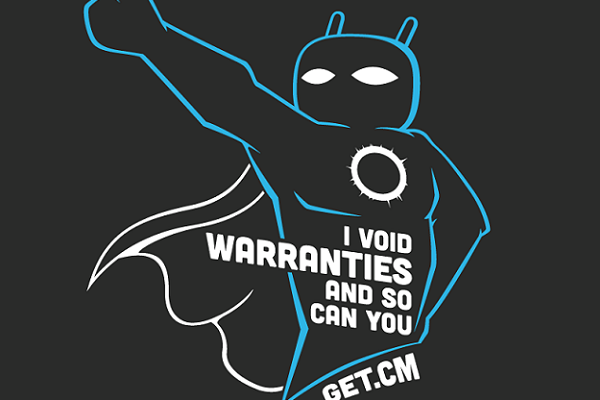Last Updated on April 9, 2017 by Mathew Diekhake
As you undoubtedly know, the One M7 is last year’s flagship for the HTC company and it comes for several phone carrier networks. The original smartphone dubbed “HTC One” comes for Sprint only these days after being discontinued by AT&T, Verizon and T-Mobile. It’s big display, Extremely high pixel density screen, Fast 4G mobile data support, NFC, Quad core processor and High-resolution display caps off several standout features that give great reasons to buy the phone in the first place. However, since it’s getting old and nearly seeing its second birthday, it’s time many of you updated to a newer handset. We say this since we don’t recommend installing the Snapshot ROM on the daily drive, but rather a secondary phone since the ROM isn’t a last version. Since it’s not last it will come with bugs, lags, temporary performance issues, stalls and other software issues alike. That said, it’s closer to being the final product and not the first rollout phase. This is CyanogeMod we are talking about after all and the M12 ROMs are brought in as a goodbye to the KitKat ROM before we start seeing Android 5.0 Lollipop custom ROMs and firmware.
You can’t start installing custom ROMs until you have root access. Since you have already unchained the system internals away from the factory restrictions it’s time to create a backup. There are two different ways to do this. The first is backing up your data such as phone contacts using the Titanium application available from the Google Play Store. We love this app since it’s like the Helium app but for those with unlocked hardware. Secondly, you want to take a Nandroid backup of the ROM so you can go back to the current ROM instead of it being wiped. You should understand that flashing a custom ROM will officially wipe the one in place now. You can use the external SD card or internal memory for backing up. The internal system does not get wiped when applying a factory reset and that’s why it remains safely kept.

We are factory resetting the handset during the steps. That means you will lose the data unless you back as I mentioned before in the step earlier.
Just like software updates, the phone’s battery is prone to shutting down during the installation process here too. That’s why you want to follow a similar recommendation of a 50% charge level before starting the steps. Of course many of you already have the USB charging feature working, and since we are plugged into the computer for most of this guide, won’t need to worry as much about the battery.
The HTC One M7 is a USB Mass Storage Device. When we plug the phone into the computer we must stop the USB Mass Storage device from running to avoid data corruption. Just like the USB driver you may use for files, you want to stopover at the “safely remove hardware” icon at the system tray and stop the process.
In addition to being rooted, you want to have the most modernistic CWM recovery or team Win’s TWRP recovery installed. Additionally, you ought to be an advanced Android user to apply such techniques as these. They are not simple operating and require transferring files from a computer over to the devices memory. From there you must load the files by following our steps.
The title of the post suggests this is for Sprint subscribers only. You must obey this request since it won’t work on the others and can end up soft-bricking the device. The Sprint model has its own unique model number and thus has its own unique file for downloading. Since the other carrier handsets are discontinued for this model, we don’t know if the developer has any plans or releasing a file for the others.
People can choose between a Windows computer, laptop or even a notebook. All you need to do is check that it has a working USB slot mounted in the side. That way we know we can connect the USB wire and hook the two machines together.
Lastly, stopover at the Developer options menu. Now enable the USB debugging mode so that it connects successfully. Furthermore, you must have the latest USB drivers for this to work. You get them from the official websites and other third-party sources. Basically, if you are connecting the smartphone to the computer and you are accessing the data from the drive you know the phones drivers are working. That means you don’t have to re-download any drivers. The rest of you will and it’s important you do since it won’t work without them.
HTC One M7 CM 11 M12 Snapshot Android 4.4.4 ROM installtion guide for Sprint subscribers
- Turn the computer on and log in to the user account of your choice.
– it’s a great idea to use your own since that’s where the files will be. (Unless your Mum’s digging the latest version of Cyanogen these days). - Download the M7 Snapshot zip from here.
- Download Google Gapps for KitKat here.
- Don’t extract any files.
- Transfer them directly over to the internal memory of the M7 phone.
- Turn the phone off.
- Boot it up into the custom recovery of your choice. Choose from ClockworkMod or team Win.
- Apply the factory reset by selecting ‘wipe data/ factory reset’ for CWM and “wipe”for TWRP.
- Clockwork users ought to press: ‘install zip from sdcard’, then ‘choose zip from sdcard’.
- Team Win users ought to press the “install” option.
- Search and upload the M12 zip file.
- Confirm the installation.
- Do the same with the Gapps pack.
- Start with the uploading steps and repeat.
- Go back to the main screen from recovery and select the “reboot system now’ option.
